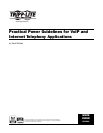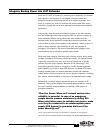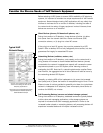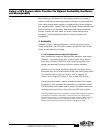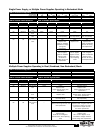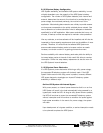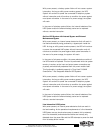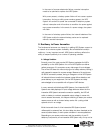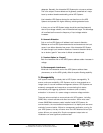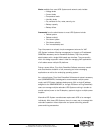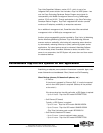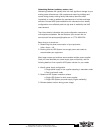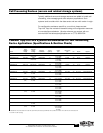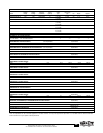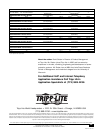
4
© 2008 TRIPP LITE. ALL RIGHTS RESERVED. THE POLICY OF TRIPP LITE IS ONE OF CONTINUOUS IMPROVEMENT.
SPECIFICATIONS ARE SUBJECT TO CHANGE WITHOUT NOTICE.
ALL TRADEMARKS ARE THE PROPERTY OF THEIR RESPECTIVE OWNERS.
Select a UPS System which Provides the Highest Availability, Resiliency
and Manageability
When selecting a UPS System, the most obvious criterion to consider is
whether a UPS System has enough capacity (VA/watts) to power equipment
while having enough battery capacity to operate during a power outage for
your required duration. Specific Tripp Lite UPS System recommendations are
listed at the end of this document. Often overlooked during the selection
process, however, are more subtle, yet critical, criteria that should be
considered, including availability, resiliency to power anomalies and
manageability.
1. Availability
Availability hinges on three considerations: the VoIP equipment's power
supply configuration, the UPS System's battery configuration and the UPS
System's power electronics topology.
A. VoIP Equipment Power Supply Configuration
Many switches and routers are equipped with redundant power supply
capability. If one power supply fails, a second power supply steps in
and powers the device. Redundant power supply configurations are
strongly recommended to ensure continuous system availability.
Whether one or two power supplies are deployed, the equipment can
draw power from one of three sources: directly from facility power alone
(for simplicity's sake we will use the term “wall” to describe this
source), from a single UPS System or from multiple UPS Systems.
The following tables detail a switch's operational status, from a power
perspective, in both redundant and combined (non-redundant) modes.
The tables detail switch status under a variety of operational scenarios,
including power supply failure, utility failure and UPS System failure.
Note: Larger switches often have the capability to be alternatively configured to operate in
a combined (non-redundant) configuration. In combined mode, two power supplies'
capacities will be summed. A true doubling is not generally achieved. A factor of 1.67x is
typical. In combined mode, there is no redundancy. Should a power supply fail, the
available power is generally reduced to the capacity of a single power supply.



